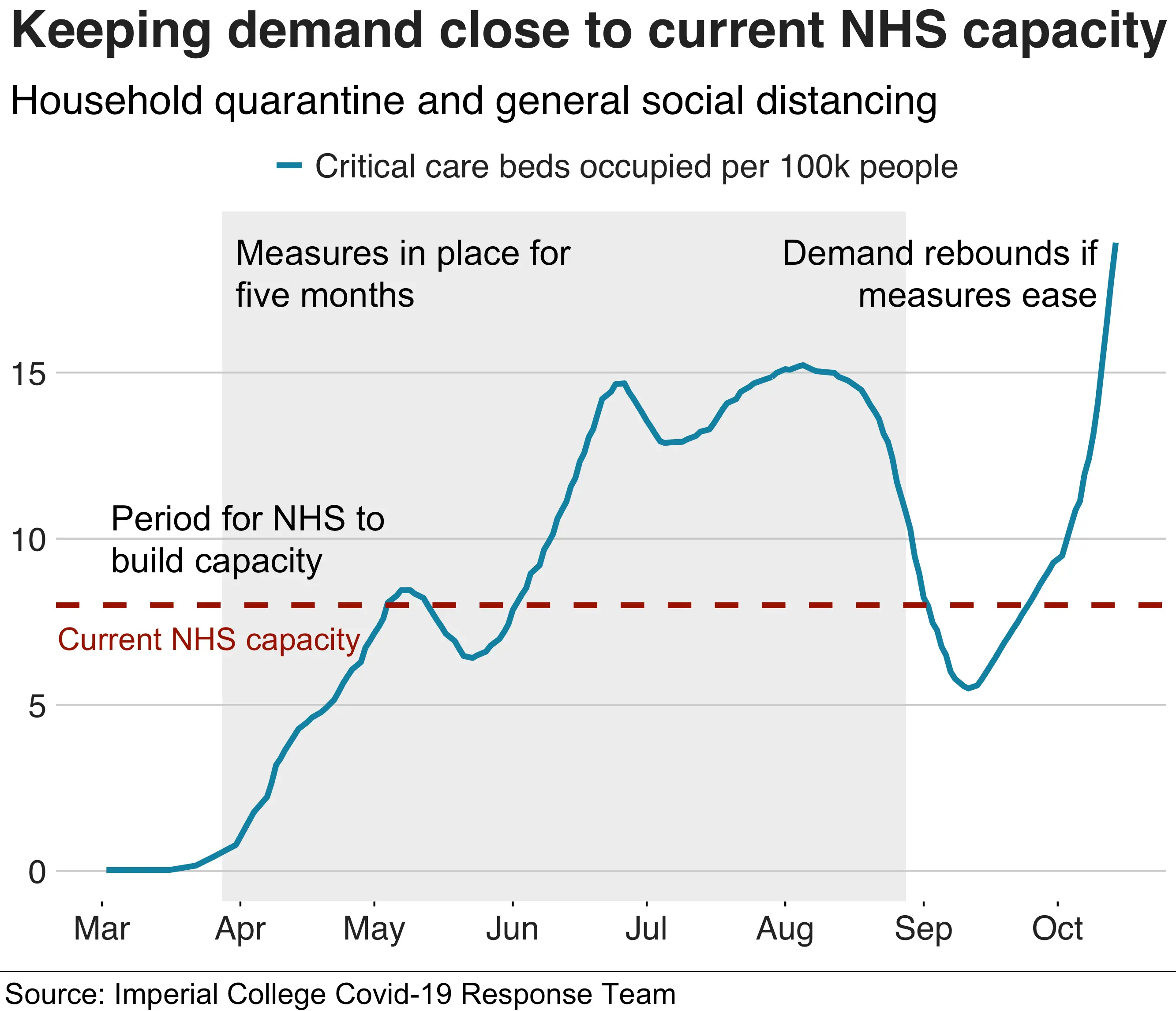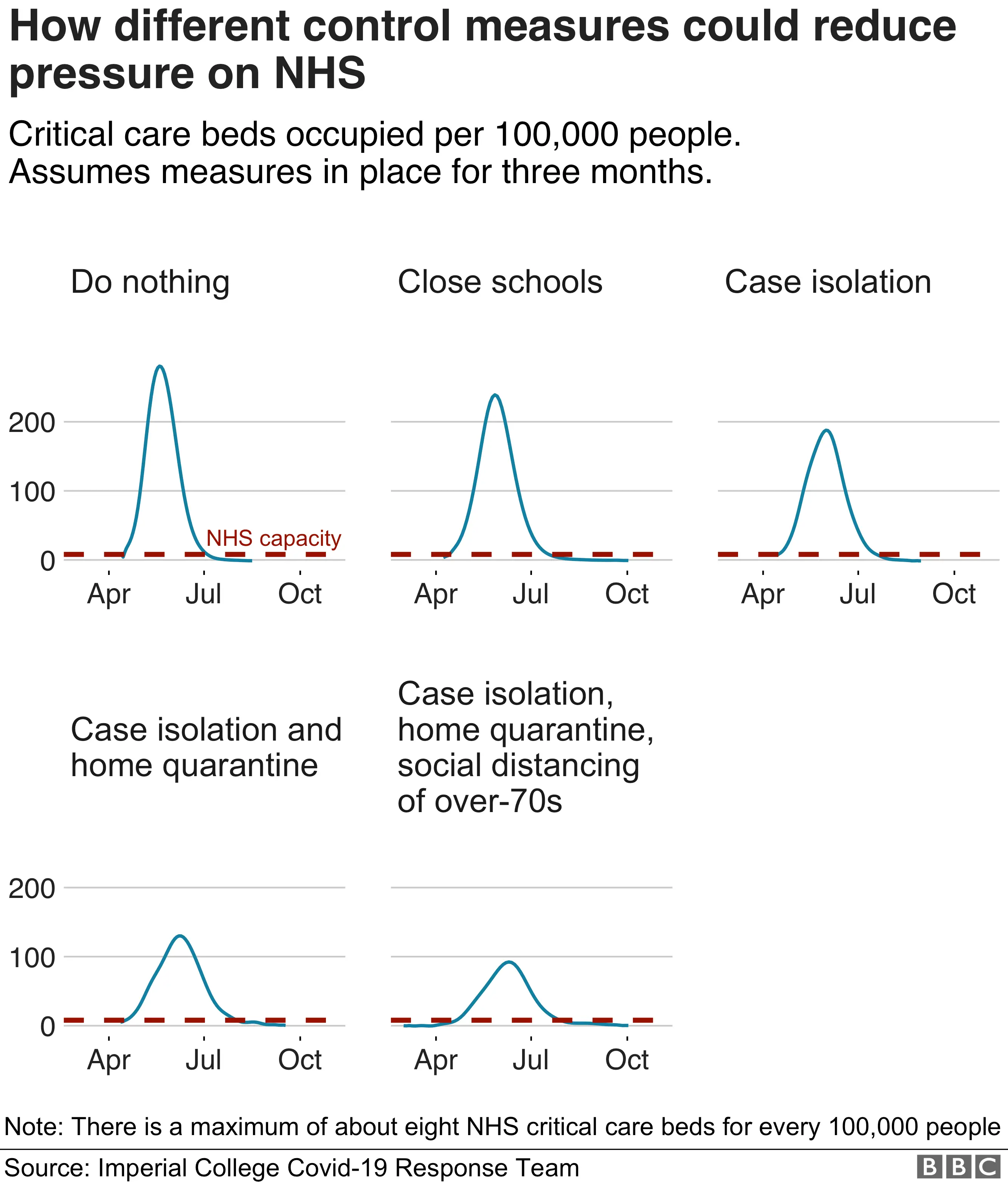Coronavirus: UK changes course amid death toll fears
 Getty Images
Getty ImagesChange course or a quarter of a million people will die in a "catastrophic epidemic" of coronavirus - warnings do not come much starker than that.
The message came from researchers modelling how the disease will spread, how the NHS would be overwhelmed and how many would die.
The situation has shifted dramatically and as a result we are now facing the most profound changes to our daily lives in peacetime.
This realisation has happened only in the past few days.
However, it is long after other scientists and the World Health Organization had warned of the risks of not going all-out to stop the virus.
The crucial piece of evidence came from the scientists at Imperial College London who first realised the scale of the problem in China and whose advice is heavily influential in government.
They said coronavirus was the most serious public health threat seen in a respiratory virus since the 1918 flu pandemic - known as the Spanish flu.
They assessed three strategies:
- Suppression - break chains of transmission, effectively trying to stop the epidemic in its tracks, and bring cases down as low as possible, as China has done
- Mitigation - accept you cannot stop the coronavirus so slow its spread and prevent a massive peak in cases that would overwhelm the NHS while trying to protect those most at risk of severe disease, which appeared to be the UK strategy last week
- Do nothing - and let the virus rip through the population

- EASY STEPS: How to keep safe
- A SIMPLE GUIDE: What are the symptoms?
- TRAVEL PLANS: What are your rights?
- IN-DEPTH: Coronavirus pandemic

It was on only Friday that Sir Patrick Vallance, the chief scientific adviser, explained the mitigation plan to the BBC.
He said: "Our aim is to try and reduce the peak, broaden the peak, not suppress it completely.
"Also, because the vast majority of people get a mild illness, to build up some kind of herd immunity so more people are immune to this disease."
If mitigation worked it would have avoided the most draconian measures other countries have used and built up immunity, which would help limit the spread of coronavirus.
Mitigation involves some social distancing strategies, while suppression beefs up those measures, including possible restriction of movement and increased periods of isolation.
The modelling projected that if the UK did nothing, 81% of people would be infected and 510,000 would die from coronavirus by August.
The mitigation strategy is better, but would still result in about 250,000 deaths and completely overwhelm intensive care in the NHS.
The experience of Italy, and the first cases in the UK, led to this dawning realisation.
About 30% of cases that end up in hospital are expected to need intensive care, such as ventilators or ECMO machines, which take over the job of breathing from the lungs.
That is quite simply beyond the ability of the NHS to cope.

The analysis estimated the limits of intensive care would be "exceeded by at least eight-fold" even under the most optimistic mitigation plans.
"Even with the sort of interventions which were being planned and been announced last week, there would be a risk of intensive care units being overwhelmed," said Prof Neil Ferguson from Imperial.
The report concludes "suppression is the only viable strategy at the current time". It is hoped deaths could be limited to the thousands or tens of thousands.
The government has always said it is following the science and the science has changed profoundly.
Hence, we should be waving goodbye to pubs, clubs and theatres, work from home and isolate whole households if any one person becomes sick.
However, the suppression approach comes with major problems.
It effectively requires shutting down parts of society and there is no exit strategy.
As fewer people would be infected there would be little immunity in the population and cases would soar soon after measures were lifted again.
This is the conundrum China now faces. Research suggests 95% of people in Wuhan were still susceptible to the virus at the end of January.
The report suggests we may have to wait 18 months for a vaccine, but even that is not guaranteed.
We could be in this for the very long term.
It is worth stressing this is all based on mathematical models. They make assumptions, they are not perfect and what they find is not written in stone.

This virus emerged only in December and we're still trying to fully understand it. The scale and role of asymptomatic infections or the summer weather in the pandemic are still unknown.
But Dr Adam Kucharski, another disease modeller who was not part of the Imperial study, told me: "There's no simple solution to this, it is probably toughest epidemic I've ever had to analyse.
"There is no way of it playing out without some serious downsides."
Follow James on Twitter
